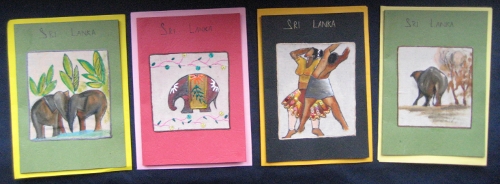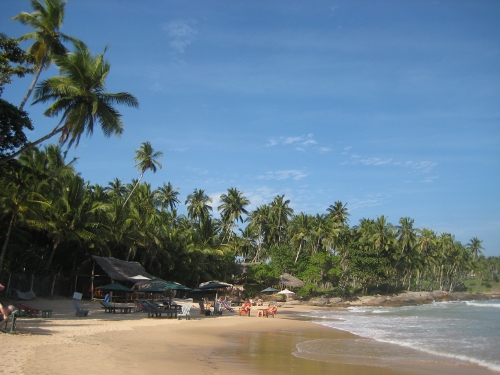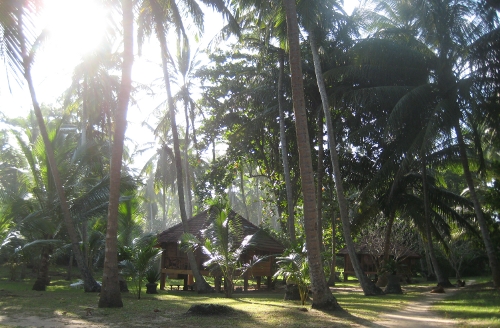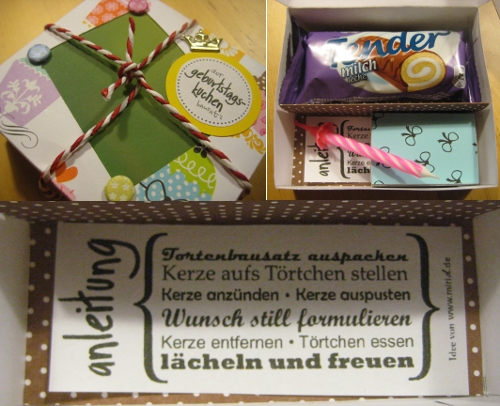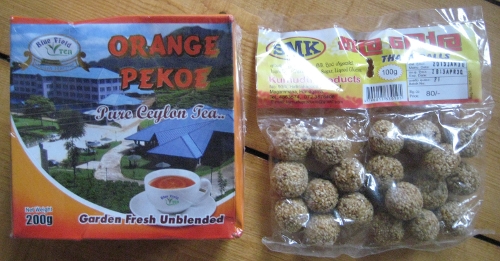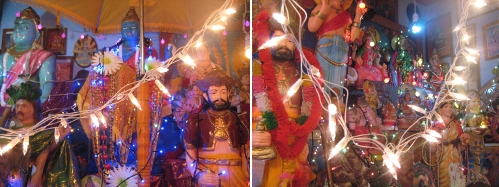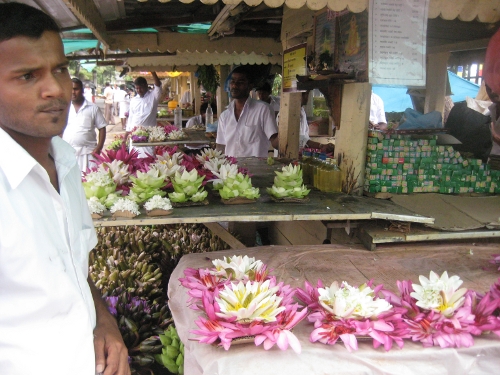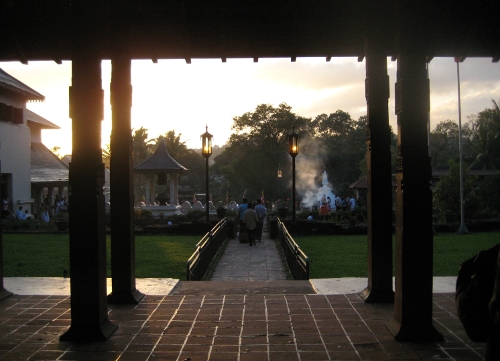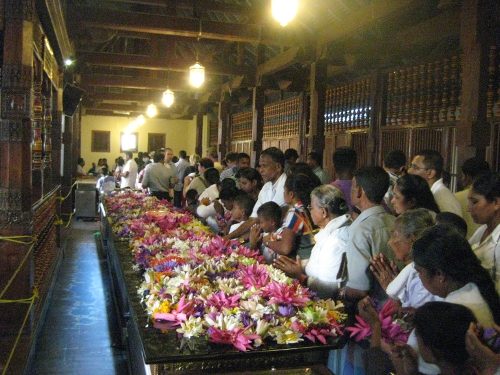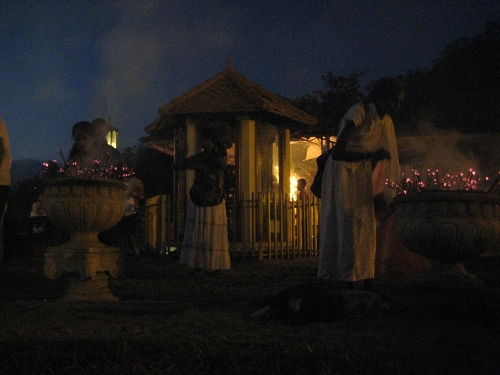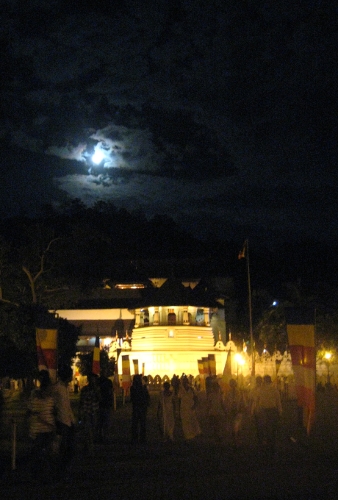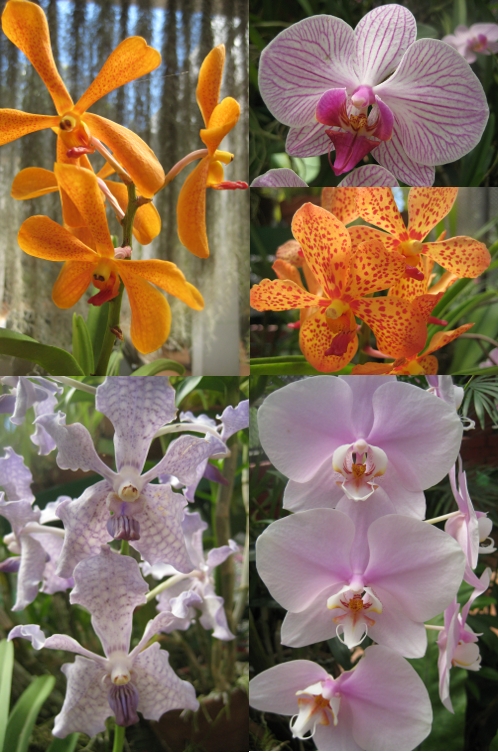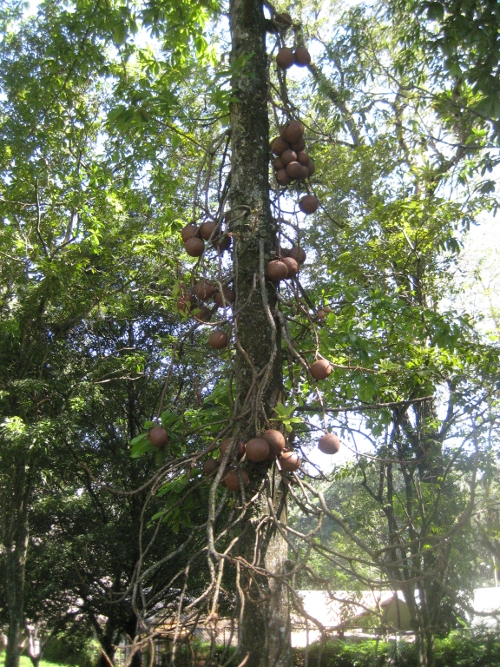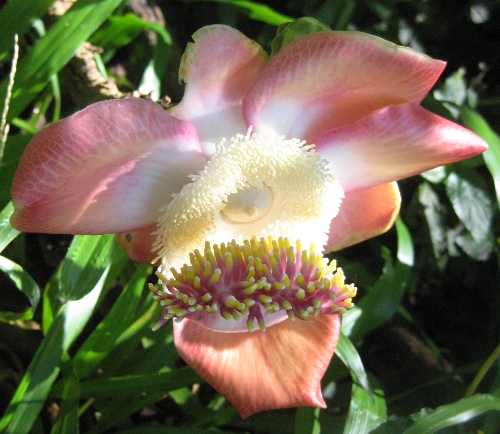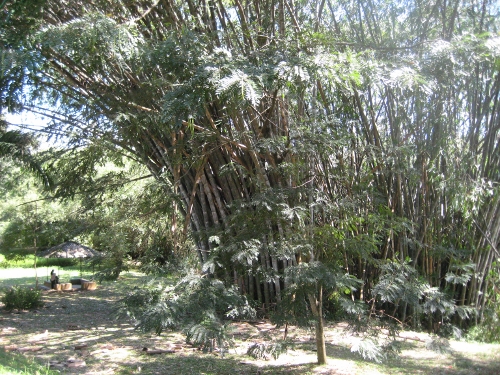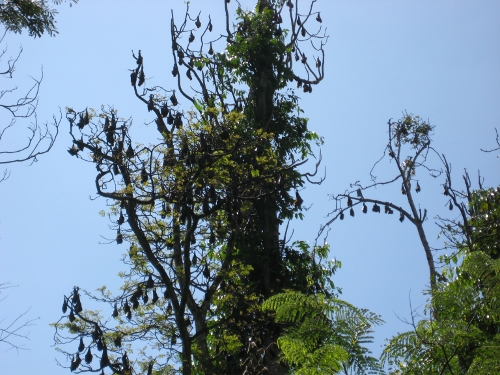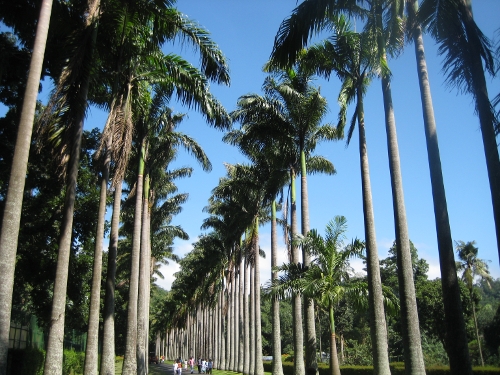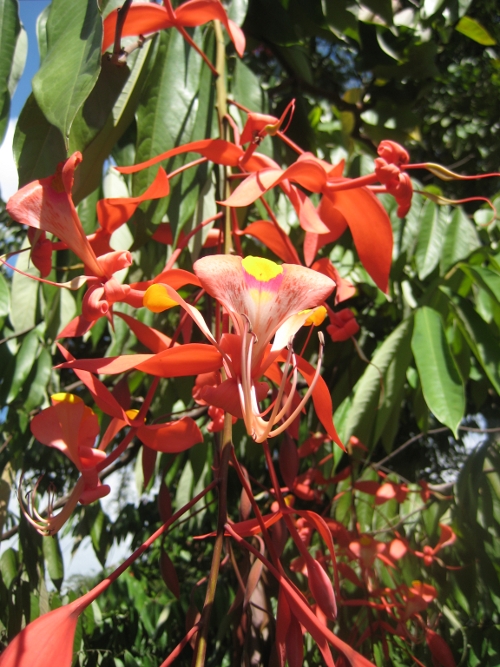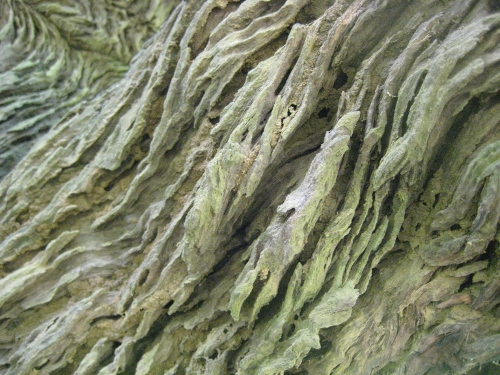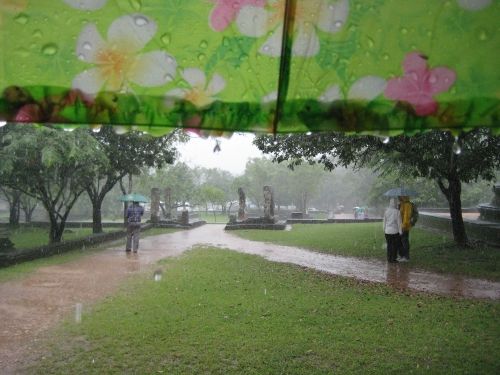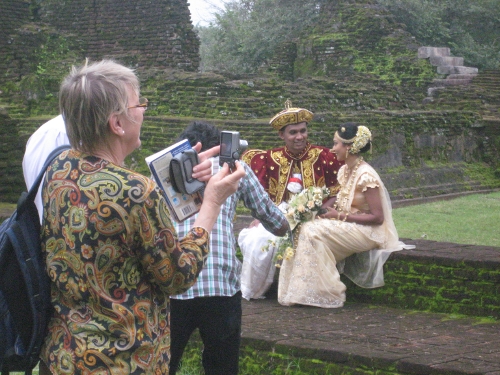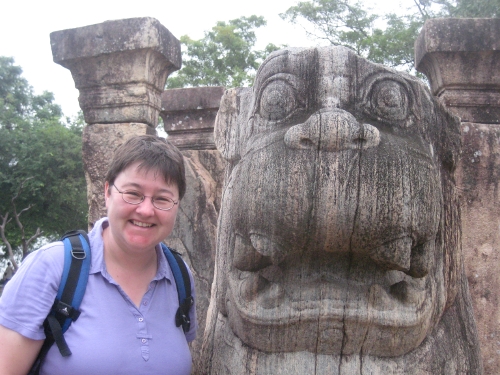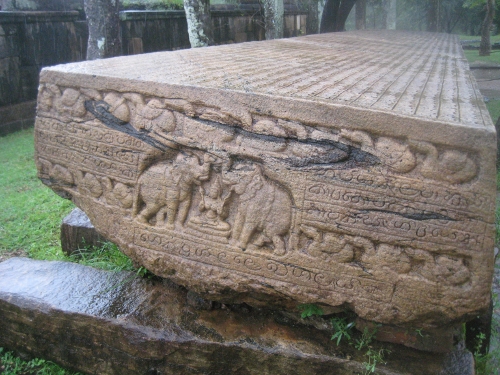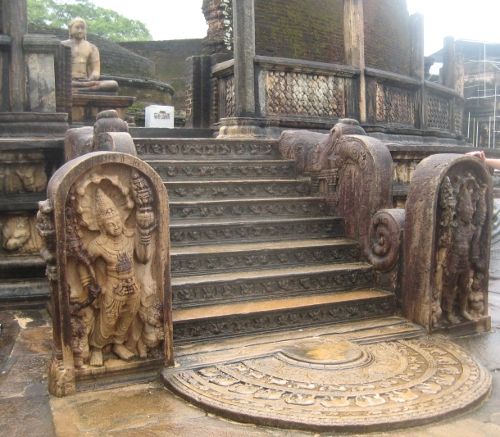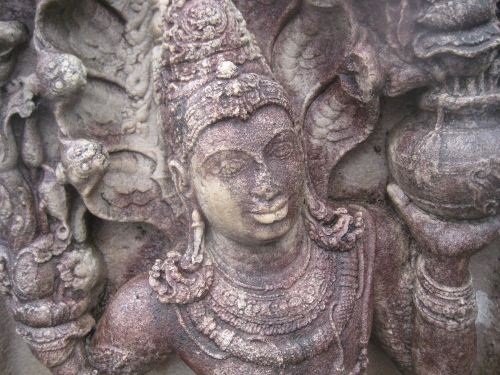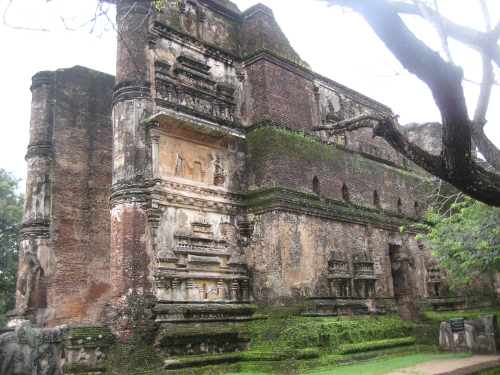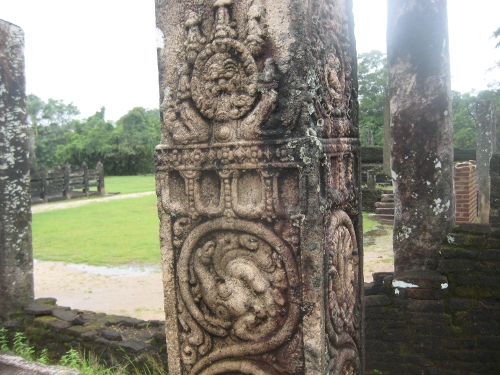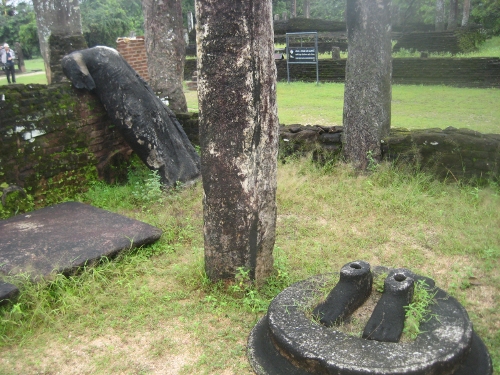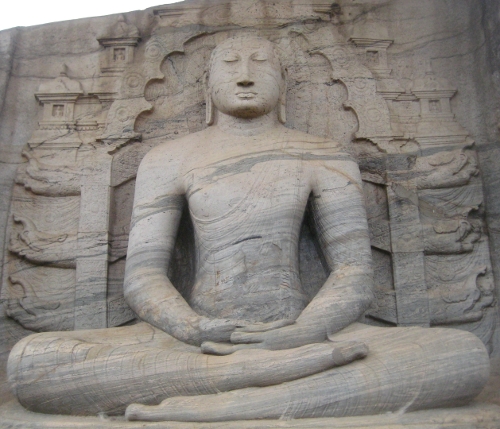Zur Reise in Sri Lanka für den interessierten Leser noch ein paar Informationen, hauptsächlich zu den Guest Houses und Hotels, in denn wir untergekommen sind. Wer also keine Reise nach Sri Lanka plant, kann sich gerne wieder anderen Dingen widmen 😉
For those of you planning a trip to Sri Lanka I decided to put together a post with information, mainly on the guest houses and hotels we used on our trip. So if you’re not interested in travling to Sri Lanka you might as well return to other tasks 😉
Sigiriya
Flower Inn (stayed: January 20-22, 2013)
Contact: 066-5672197 or 066-5689953
A family-run guesthouse with nine rooms and private baths, offering somewhat warm showers. The rooms were clean, though very damp – my travel companion said mouldy but I don’t think so. Mosquito nets and a fan. Wi-fi available. It’s conveniently located within walking distance from Sigiriya rock (about 20 minutes). Breakfast is included, very tasty dinner will be served as well if you order ahead. The family who runs the place is very friendly and helpful. The bus from Dambulla stops right in front of it.
Rate: 2000 LKR for the double room, the dinner was an additional 500 LKR.
If you plan to also see the Rock Caves in Dambulla and are pressed for time, do them on the same day. Start Sigiriya early at 7am and you will easily make it to Dambulla by bus in the early afternoon to spend a couple of hours in Dambulla.
If you can avoid it, do not try to find a taxi in Sigiriya and instead allow for enough time to use the busses. The taxis are a total rip-off – probably taking advantage of the somewhat remote location.
Polonnaruwa
Siyanko Holiday Resort (stayed: January 22-23, 2013)
Contact: 027-2226867
A hotel with about 20 rooms with fan and AC, nice shower. Breakfast included. The restaurant also serves lunch and dinner if you are interested. Laundry service available at 100 LKR per piece. Wi-fi available (theoretically) but it didn’t work when we were there. It doesn’t exactly have a family feel to it but the staff is friendly and helpful – one of many places where tips were not accepted by some of them. Conveniently located right next to the very interesting museum and the Palace District which is a good place to start out your visit (as the museum is where you need to get the ticket anyway). The hotel has bicycles for rent.
Rate: 6000 LKR for the double room. Dinner is „à la carte“.
If you prefer a tuk-tuk, call Manju at 071-6514804. But don’t do the whole trip: you can really walk to the museum (less than 5 minutes). Start there at maybe 9 o’clock and have Manju pick you up two hours or so later to take you to the tooth terrace etc. He was very helpful, especially as we had chanced upon a day with pouring rain – having a tuk-tuk to wait in until the worst of the downpours were over was a real plus.
Anuradhapura
Lake View (stayed: January 23-25, 2013)
Contact: 025-2221593
A family-run guest house with 15 rooms that has been operating for like 20 years. Very friendly and helpful hosts, clean rooms, mosquito nets and a fan. Wi-fi and laundry service available. Bikes can be rented, tuk-tuks will be arranged. Tasty dinner will be served (at extra cost) if you order in the morning.
Rate: 3200 LKR for double room with breakfast (approximately – I lost the bill)
The tuk-tuk drivers want to give you a multi-hour tour – do negotiate the prices, mabye even checking in with the hosts, they know the prices. Tuk-tuk from new bus stand to Lake View is max. 200 LKR, less from the old bus stand.
Kandy
Sharon Inn (stayed: January 25-27, 2013)
Contact: 081-2222416, 081-2222446, sharon@sltnet.lk, http://www.hotelsharoninn.com
VERY clean guest house with 10 rooms, all with AC, fan and mosquito nets (though the AC was neither necessary nor working in our room). We were 68 steps up on like the fourth floor with a great view towards the lake and the Tooth Temple, balcony included. Run by a German and her Sri Lankan husband. They have a Sri Lankan buffet every night which we tried – very varied and so, so delicious (10 USD per person). They theoretically have Wi-fi but it took forever to get the code and then it wouldn’t reach our floor. Laundry service at 120 LKR per larger piece and I think it was 60 LKR per piece of underwear.
Rate: 6000 LKR for the double room with breakfast.
Go to Gunatilake Batiks (walking distance from Sharon Inn), they have gorgeous batiks – but extremely overpriced. Do negotiate and start offering about 40% of the proce on the tag. I bet you shouldn’t pay more than 60% but assume that’s hard to get. Same is true for the wood carving store close-by.
Even though we didn’t make use of his extended services, I feel I can recommend B.M.G. Jayarathna, „Tara“ for short. He was the tuk-tuk driver we chose at the bus station (200 LKR to Sharon Inn) and he actually has a guest book that he showed to us and there were countless very detailed entries of highly satisfied travellers who went on all kinds of tours with him (he has cars and bikes for rent as well). He can be reached at tharagq1344@gmail.com or 077-9566195.
Nuwara Eliya
Glenfall Resort (stayed: January 27-28, 2013)
Contact: 052-2223182, 052-2223364, glendid@sltnet.lk
A fascinating place with a lot of flair to it. The owner is in antiques and the dining room has large cupboards with all kinds of antiques on sale (he’s a certified seller) and there are more in the reception area and in the aisles. But the highlight is the sparrow family nesting in the reception chandelier in its 10th generation! The room we had was large, the bathroom had a nice hot shower. Fans etc. are not necessary, but warm blankets are and they were provided. Staff is very friendly and breakfast in the garden was quite a treat. The resort currently has 7 rooms but the owner plans to build a larger „and more modern hotel“ on property close-by, starting in 2013.
Rate: 5000 LKR per double room with breakfast. Dinner is „à la carte“.
Tours of all kinds can be arranged but for a visit to Mount Harrow Tea Factory of Blue Field Tea Gardens we relied on Cihan Tours. He charged 3000 LKR for a 4-hour tour and was a great guide, with a wealth of knowledge not only on tea but on just about anything you would want to know about Sri Lanka. Contact Cihan at 072-4694923 or 077-0703650.
Dalhousie / Adam’s Peak
Green House (stayed: January 28-29, 2013)
Contact: 051-2223956, 051-3051048, 072-3681736, greenhouse_adamspeak@gmail.com
Simple guesthouse with a scary but hot shower, bring your own towel! Mosquito nets provided. Conveniently located at the end of the village, really close to the start of the Adam’s Peak ascent. Breakfast is included (and will served whenever you get back from the night climb, usually starting at about 2 am). Dinner is included as well and was pretty good.
Rate: 4000 LKR for a double room, half-board included.
Goyambokka Beach, Tangalle
Palm Paradise Cabanas (stayed: January 29-February 4, 2013)
Contact: 047-2240338, ppcabana@sltnet.lk, http://www.palmparadisecabanas.net
There really isn’t that much to say other than: excellent. There are 22 cabanas of different sizes – we stayed in a standard one near the beach. The whole compound is one huge palm grove with lots of smaller animals around – we particularly liked the visiting chipmunks and fireflies! There’s a fan and a mosquito net so sleeping was uninterrupted once we got used to the constant roll of the waves. What we found most amazing was the love for detail – be it the little water jugs ready to douse the sand off your feet before you climb up onto your verandah or (very important for me!) the reading lamps you could get at the reception. The staff was very friendly and helpful and really did all in their might to make this a perfect stay. We chose the half-board deal and dinner was so, so delicious. There’s even a massage hut and you can book ayurvedic massages and not have to go anywhere far (and they were good, too!). Wi-fi was available in a specific Wi-fi zone only but it was good. We had planned to stay five nights but extended for a sixth after breakfast the first morning.
Rate: 60 USD per Standard Cabana, half-board.
Can’t say much about the surroundings because in fact we really only slept, ate, spent time on the beach and started the cycle over again. There was one brief visit to Tangalle city which I do not recommend. But there are tons of other more interesting things that you can do if want to be more active.












